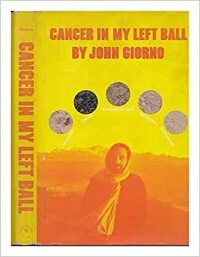Take a photo of a barcode or cover
Giorno himself has said that he writes poetry always as performance, and something is definitely lost when consumed on the page, especially his early poetry that makes up this collection. The dueling dual columns of text point toward what the overlapping, discordant, competing performances offer, though, and when you have heard or experienced some of his poetry performed then you can simulate the cacophony, somewhat, in the experience. These years of his poetry, especially, involved his method of taking found text and combining disparate sources with Tibetan Buddhist iconography and emotional, sexual, revolutionary ideologies to overwhelm the experience and allow the mind to find a new meaning in what he is putting forth.
I will say I enjoy some of his later work more, when he is including more Buddhist ideas and experiences and interpretations into his work, instead of just iconoclastic imagery. But even just reading these poems, and trying to imagine what they would have been like at the time they were created, how they would have flown in the face of what other poets were doing, really brings a new appreciation to Giorno's trailblazing fearlessness. Just reading his notes of what the first performance of "Cum" was like, and then re-reading that poem and trying to experience a semblance of that emotional anarchy, is rich and rewarding.
I will say I enjoy some of his later work more, when he is including more Buddhist ideas and experiences and interpretations into his work, instead of just iconoclastic imagery. But even just reading these poems, and trying to imagine what they would have been like at the time they were created, how they would have flown in the face of what other poets were doing, really brings a new appreciation to Giorno's trailblazing fearlessness. Just reading his notes of what the first performance of "Cum" was like, and then re-reading that poem and trying to experience a semblance of that emotional anarchy, is rich and rewarding.

